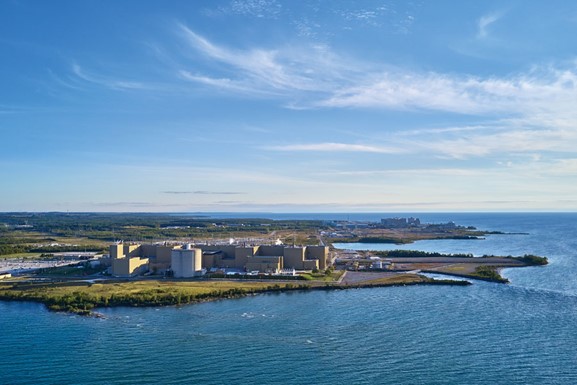Workers recently installed manipulator equipment at a full-scale mock-up of areas of the Hanford Site’s Waste Encapsulation and Storage Facility. (Photo: DOE)
The Department of Energy’s Office of Environmental Management (EM) announced this week that preparations are well underway for the transfer of nearly 2,000 highly radioactive cesium and strontium capsules from the Waste Encapsulation and Storage Facility (WESF) to interim dry storage at the Hanford Site near Richland, Wash.
The cover of the May 1977 issue of Nuclear News (left), an image of the story discussing Carter's decision to cancel the breeder reactor program (center) and the cover of the June 1977 Nuclear News (right).
The ANS Fuel Cycle and Waste Management Division will present a webinar today at noon EST (the recording will be available via the webinar archive to all ANS members) featuring an international panel of experts on nuclear waste reprocessing. The panel will explore the idea of separating certain radionuclides from waste using recycling technology that enables pure materials to be used for other purposes.
Bruce nuclear power plant in Ontario, Canada. (Photo: Bruce Power)
Bruce Power and Isogen, a partnership between Kinectrics and Framatome, have completed the installation of Isogen’s isotope production system (IPS) at Unit 7 of Bruce’s CANDU nuclear power plant in Ontario, Canada, making it the first power reactor in the world with installed capability to produce lutetium-177.
Graphical rendering of Fortis railcar design with spent nuclear fuel cask. (Image: DOE)
The Department of Energy has issued a request for proposals for the fabrication and testing of a prototype eight-axle railcar to carry the nation’s spent nuclear fuel and high-level radioactive waste. The heavy-duty, flat-deck railcar design known as “Fortis” received approval from the Association of American Railroads (AAR) in January 2021 to proceed to building and testing.
From left to right, Richmond County Technical Career Magnet School (Team 1) students Leila Cortez, Jaidyn Moore, and Tamea Dunnom and teacher Carla Biley won third place in Best Engineering Student Design at the WORCshop@AU event. They are joined by Rick Connolly, SRNS operations and maintenance director and WORCshop@AU judge (second from right).
Savannah River Nuclear Solutions (SRNS), the Department of Energy contractor responsible for the management and operations of the Savannah River Site in South Carolina, partnered with Augusta University to create WORCshop@AU, an education outreach opportunity to introduce local high school students to nuclear science careers by solving a real-world problem. The program concluded on December 9, when student teams presented their solutions during a friendly competition.
The cover of the August 1969 issue of Nuclear News (left), an image of Brunhilde, the dog that had the first nuclear-powered pacemaker in the U.S. (center) and the cover of the December 1970 Nuclear News (right).
In this first installment of a #ThrowbackThursday post, Nuclear News provides a review of radioisotope-powered pacemakers in response to an article in The Wall Street Journal. The article, published earlier this week, looks at the issue of disposing of nuclear-powered pacemakers, although considering how few are still in use today, it seems like this is really much ado about nothing.











